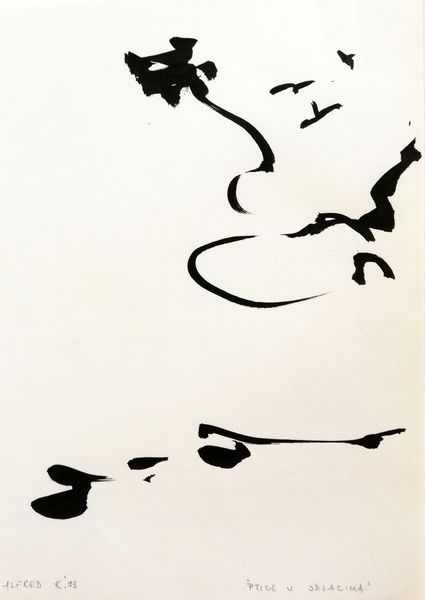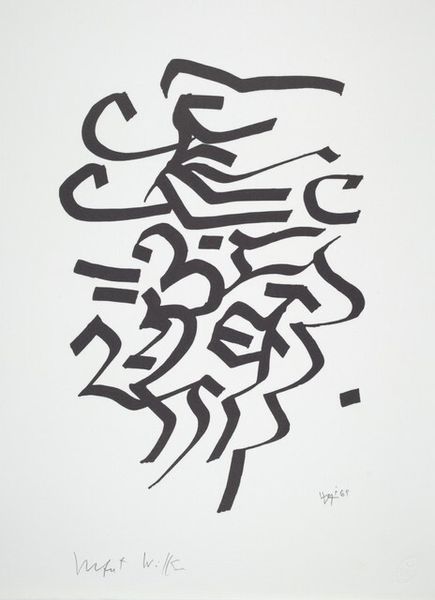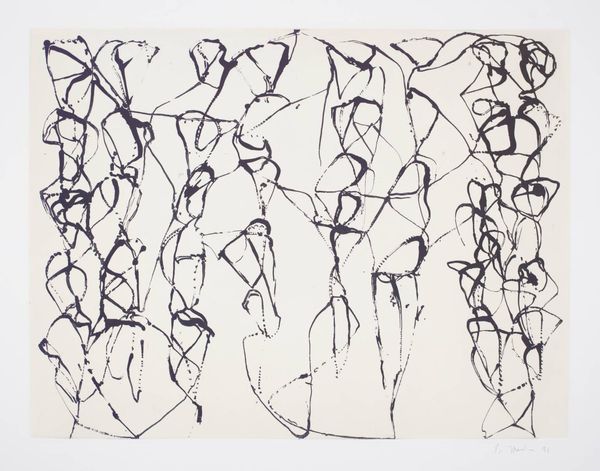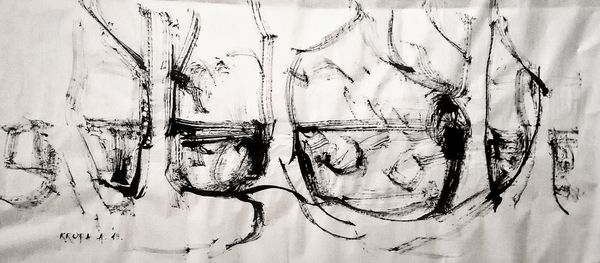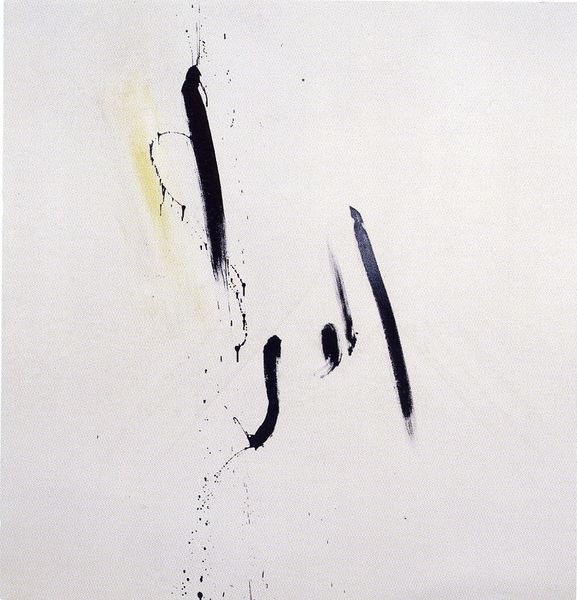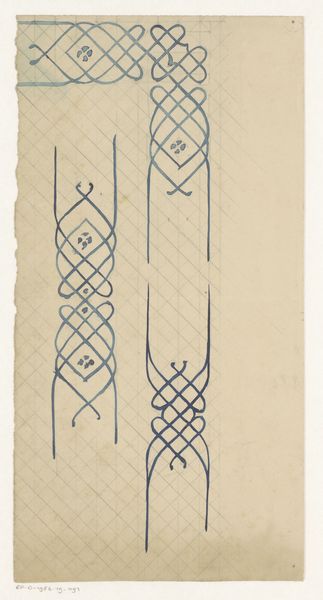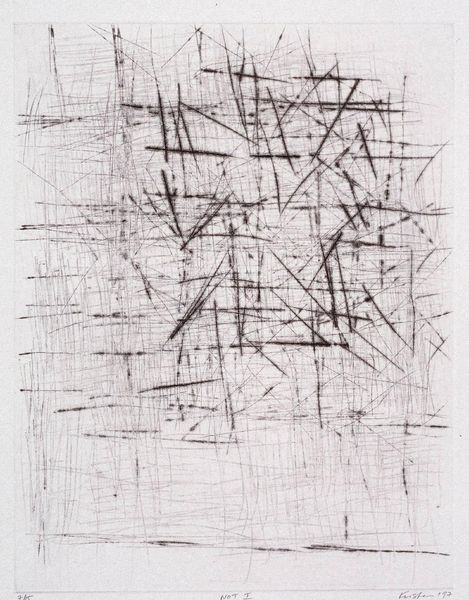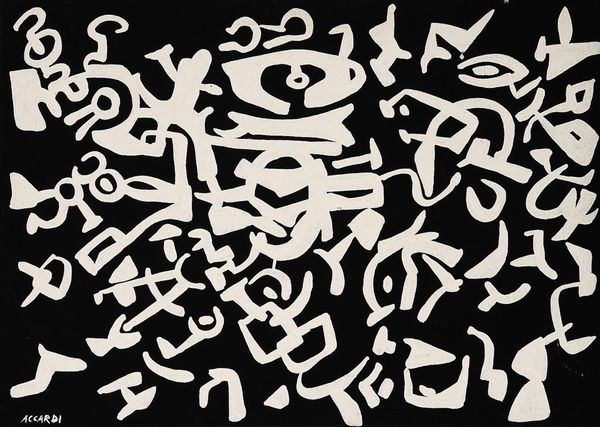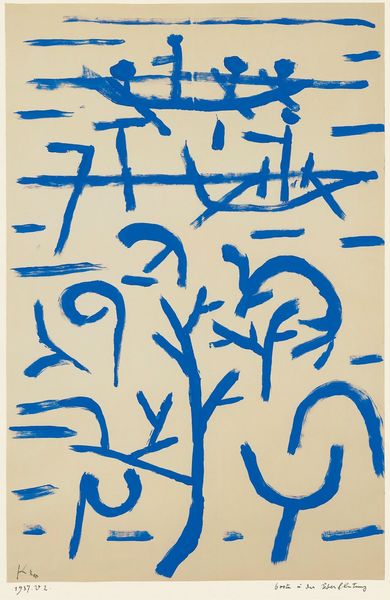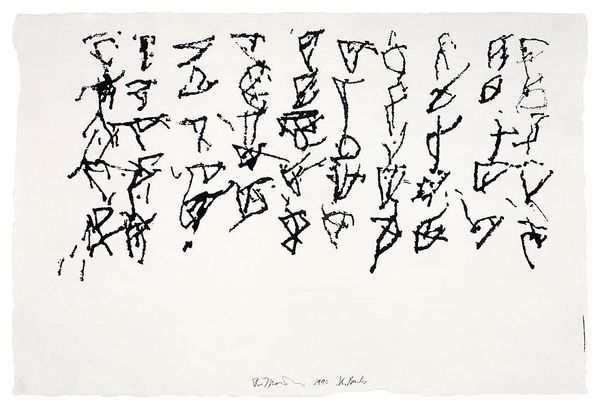
drawing, paper, ink
#
drawing
#
paper
#
form
#
ink
#
ink drawing experimentation
#
geometric
#
calligraphic
#
abstraction
#
line
#
abstract art
#
modernism
#
calligraphy
Dimensions: 42 x 30 cm
Copyright: Creative Commons NonCommercial
Curator: The starkness is arresting. At first glance, I feel a chilling sort of isolation. Editor: Indeed. Let's delve into this intriguing ink drawing on paper by Alfred Freddy Krupa, created in 2017. The piece is entitled "Drawing with the wild boar's tooth: Birches." Quite a unique title, hinting at the artist’s process. Curator: Wild boar's tooth...That’s incredibly suggestive, almost primal. Does the mark-making itself relate to a historical, perhaps totemic association with the animal? The irregular lines, they're not simply calligraphic. Editor: Exactly! While appearing abstract, one cannot dismiss that those lines visually signify tree trunks. It’s like Krupa attempts to portray the bare essence of 'birchness.' We know that birches are a crucial element of Northern and Eastern European iconography. Think of their association with rebirth, resilience, and, well, folklore! Curator: And culturally, birches held significant symbolic value, particularly within Slavic traditions. They were thought to have protective powers and be connected with feminine deities. Seeing the drawing now, the association does strike. This "forest" seems populated with abstract feminine figures, or maybe I am trying too hard! Editor: It might not be just you; after all, symbols work on subconscious levels. The minimalist ink strokes, like memories, only hint at complete forms. In that way, the stark contrast between dark ink and paper serves to symbolize life and death and the border between visibility and invisibility. Curator: I can’t shake the feeling that Krupa used this visual economy, this stark, nearly brutal application, to challenge modernist aestheticism. Does this rawness suggest some broader anxiety or is it an aesthetic statement? Editor: It's tempting to analyze it from a purely art-historical perspective, framing Krupa's work in the broader context of modernism's deconstruction of form. But these marks possess, let’s say, a deeper reverberation from cultural archetypes embedded in collective memory. It would be interesting to study the drawing's cultural reception, wouldn’t it? Curator: Absolutely. It pushes the boundaries, forcing us to see how individual artistic expression intertwines with cultural heritage, demanding more profound interpretations. Editor: A valuable reminder of the multilayered dialogues art provokes across time and experience.
Comments
No comments
Be the first to comment and join the conversation on the ultimate creative platform.
